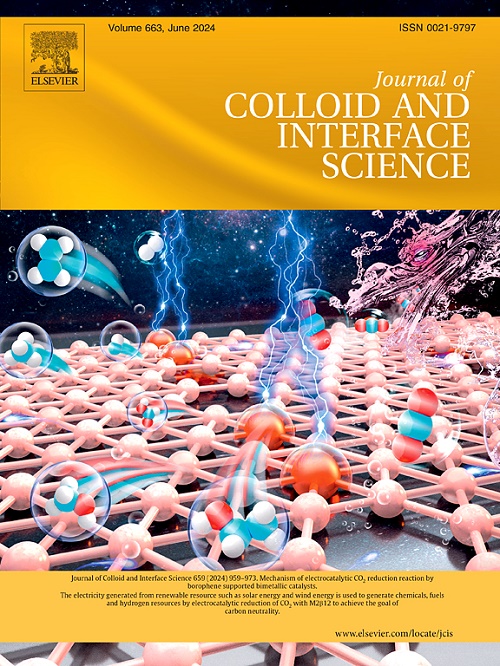锚定MoSe2构建稳定转化型Na-Se电池的三位一体策略:化学吸附、催化转化和应力分散。
IF 9.7
1区 化学
Q1 CHEMISTRY, PHYSICAL
引用次数: 0
摘要
转换型硒阴极由于其高导电性和相似的理论容量而被认为是极有前途的硫阴极替代品。然而,转换过程中的应力扩散和穿梭效应仍然是迫切需要解决的重大挑战。本文设计了一种固定在n掺杂中空介孔碳纳米球(NHMCNS)表面的MoSe2复合基质作为Se载体,用于构建Se/C阴极(Se/MoSe2@NHMCNS)。锚定的MoSe2通过增强基质内多硒化物的化学吸附,成功地减轻了硒的损失。同时,在Se/C阴极表面吸附的聚硒化物在从链式聚硒化物转化为Na2Se的过程中表现出较低的扩散势垒和较高的负吉布斯自由能。从动力学和热力学的角度看,MoSe2加速了多硒化物向最终排放产物的催化转化。MoSe2协同碳壁有效地缓解了转化过程中由于结构转变而产生的巨大应力,有效地保持了阴极的结构稳定性。基于这种三合一策略,以Se/MoSe2@NHMCNS为材料组装的钠硒电池在循环500次后具有稳定的循环性能(400.6 mAh g-1, 2C),袋式电池也具有良好的实用性能。本文章由计算机程序翻译,如有差异,请以英文原文为准。

Three-in-one strategy via anchored MoSe2 for construct stable conversion-type Na-Se batteries: Chemisorption, catalytic conversion and stress dispersion
Conversion-type selenium cathodes are considered a highly promising alternative to sulfur cathodes due to their high conductivity and similar theoretical capacity. However, stress-diffusion and shuttle effects during the conversion process remain significant challenges that urgently need to be addressed. Herein, a composite matrix of MoSe2 anchored on the surface of N-doped hollow mesoporous carbon nanospheres (NHMCNS) was designed as a Se host to construct Se/C cathodes (Se/MoSe2@NHMCNS). Anchored MoSe2 successfully mitigated selenium loss by enhancing the chemisorption of polyselenides within the matrix. Meanwhile, polyselenides adsorbed on the Se/C cathode surface exhibit lower diffusion barriers and more negative Gibbs free energy during the conversion from chain polyselenides to Na2Se. MoSe2 accelerated the catalytic conversion of polyselenides to the final discharge products from both kinetic and thermodynamic perspectives. The huge stress induced by structural transformation during the conversion process is mitigated by MoSe2 synergistic carbon walls, which effectively maintain the structural stability of the cathode. Based on this three-in-one strategy, the sodium-selenium battery assembled with Se/MoSe2@NHMCNS exhibits stable cycling performance (400.6 mAh g−1 at 2C after 500 cycles), and the pouch battery also demonstrates good practical performance.
求助全文
通过发布文献求助,成功后即可免费获取论文全文。
去求助
来源期刊
CiteScore
16.10
自引率
7.10%
发文量
2568
审稿时长
2 months
期刊介绍:
The Journal of Colloid and Interface Science publishes original research findings on the fundamental principles of colloid and interface science, as well as innovative applications in various fields. The criteria for publication include impact, quality, novelty, and originality.
Emphasis:
The journal emphasizes fundamental scientific innovation within the following categories:
A.Colloidal Materials and Nanomaterials
B.Soft Colloidal and Self-Assembly Systems
C.Adsorption, Catalysis, and Electrochemistry
D.Interfacial Processes, Capillarity, and Wetting
E.Biomaterials and Nanomedicine
F.Energy Conversion and Storage, and Environmental Technologies

 求助内容:
求助内容: 应助结果提醒方式:
应助结果提醒方式:


